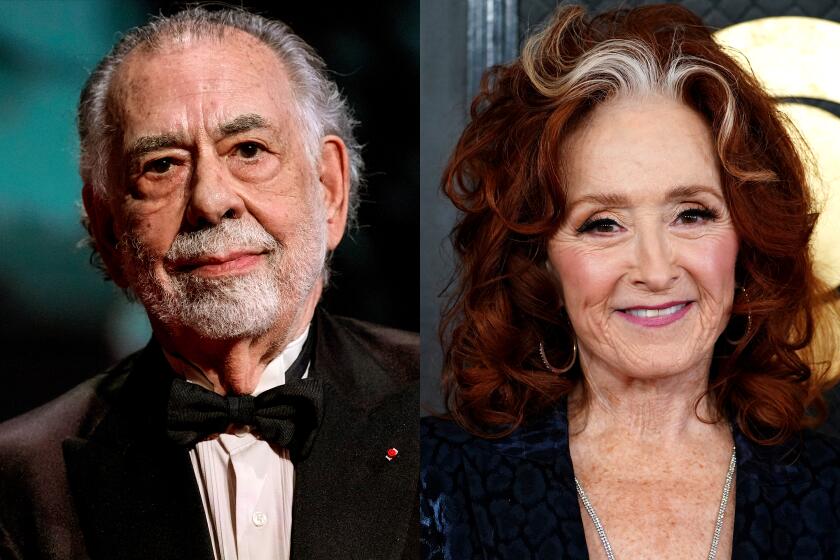Paying tribute to Holiday’s legacy
The list of jazz icons -- those compelling figures whose star-crossed lives juxtapose innovative artistic brilliance against hazardous personal excesses -- has no entry more memorable than singer Billie Holiday. Dead at 44 in 1959, she is for many the paradigm of jazz singing. And, like that of alto saxophonist Charlie “Bird” Parker -- who also died young -- her visibility has too often been clouded by the filter of dissipation rather than viewed through the crystal-clear lens of musical achievement.
“Billie & Me” at Royce Hall on Saturday night was an effort to clarify that picture, to emphasize the quality of her character as well as the pervasive beauty of her singing. And not surprisingly, it was most effective when Holiday was front and center.
For the record:
12:00 a.m. Nov. 2, 2005 For The Record
Los Angeles Times Wednesday November 02, 2005 Home Edition Main News Part A Page 2 National Desk 0 inches; 32 words Type of Material: Correction
“Billie & Me” -- A review of “Billie & Me” in Monday’s Calendar section said the tribute to Billie Holiday at UCLA’s Royce Hall was held last Saturday. It took place Friday.
First presented in 2004 as a BBC radio documentary, the production has had several incarnations since. The Royce version featured Niki Haris, Joan Osborne, Dianne Reeves, Rokia Traore, Nancy Wilson and music director-drummer Terri Lyne Carrington. Fontella Bass, a scheduled participant, was replaced by Haris.
It was clear from the first number that the evening would proceed on a two-track basis -- accurately reflecting the “Billie & Me” title. The first got underway via a large video projection of Holiday, accompanied by Wilson’s affecting reading of a life-describing narration. The second track moved forward with the music, which began with “Ain’t Nobody’s Business If I Do,” sung by Osborne and Haris. The pattern continued throughout the evening -- intimate, compelling views of Holiday, sometimes via Wilson’s narration, sometimes via atmospheric photographs, video and audio clips, followed by individualized renderings of songs closely associated with Holiday.
That none of the singers was directly affected by Holiday in a stylistic sense was understandable: Holiday simulations (and there are a few floating around the current music scene) would have been inappropriate. And it was fascinating to hear how the generic Holiday artistry affected the blues and gospel-based work of Haris and Osborne, the Sarah Vaughan aspects of Reeves and the African passions of Traore in such classics as “Strange Fruit,” “Lover Man,” “Fine and Mellow” and “The Man I Love.” Less compelling was the occasional tendency of the music to diminish the rhythmic and melodic subtleties of Holiday’s music by framing it within dully repetitive groove patterns.
Ultimately, however, “Billie and Me’s’ ” intention to honor the fullness of Billie Holiday was successful, in large measure because of the continuing potency of a life that was stilled far too soon.
More to Read
The biggest entertainment stories
Get our big stories about Hollywood, film, television, music, arts, culture and more right in your inbox as soon as they publish.
You may occasionally receive promotional content from the Los Angeles Times.






